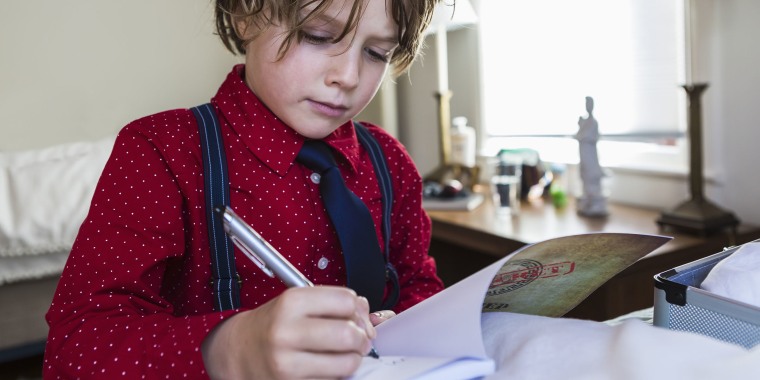By second grade, children are beginning to spend more of their school day sitting at a desk in a classroom, so it is especially important for physical activity to remain part of their daily routine. In the same way that they are establishing the learning and studying habits that they will rely on throughout their education and working life, they are also forming personal habits that will determine their future health and well-being.
Children’s gross motor skills, which involve whole-body movement, are almost fully developed around this age, although they will continue to be refined as your child learns greater body control. The same applies to fine motor skills, which involve the coordination of small muscle movements. Children in second grade are usually 7 or 8 years old, and the guidelines below cover children in the typical age group. However, the information here is intended only as a general guide. If you are concerned that your child seems to lag behind his peers in terms of physical development, you should consult your pediatrician.
Gross motor skills
Overview
Your second-grader’s gross motor skills, which involve whole-body movement, will be almost fully developed by the time they are 8 years old. In early childhood their physical activity was focused largely on practicing movements and learning coordination. Now they are transitioning into building more muscle strength and developing greater coordination, balance, and stamina. These abilities are honed through activities such as throwing, catching, and hitting balls, riding a bike and climbing on playground equipment. Physical activity at this age should include games and sports that focus on these fundamental skills. Unstructured playtime remains important, but as your child’s ability to run and jump and throw, kick and catch a ball with accuracy improves, organized sports such as baseball or soccer may be worth exploring. Other activities to consider include dance, judo and gymnastics.
Balance
Your child’s balance will improve significantly throughout this year. By the end of second grade your child should be able to ride a two-wheel bicycle.
Movement
Your second-grader should be able to combine different kinds of movements with ease, for example jumping to catch a ball and then running with it.
Sit-ups
Your child should be able to do several sit-ups at a time.
Push-ups
Your child should be able to do several push-ups at a time, lifting only their chest off the ground.
Coordination
Your child should be able to kick a ball with accuracy at a target 10 to 15 feet away.
Kicking
Your child should be able to kick a rolling ball.
Catching
Your child should be able to catch a small ball with their hands, without holding it against their body.
Dribbling
Your child should be able to dribble a ball.
Gymnastics
Your child should be able to do cartwheels and handstands.
Jump rope
Your child should be able to jump rope with a rope they are holding.
Fine motor skills
Overview
Your child’s fine motor skills, which involve the coordination of small muscle movements, will be nearly fully developed by the end of second grade, although they will continue to be refined through practice. You will see evidence of greater control and accuracy as your child performs tasks such as writing, using a keyboard, and cutting with scissors.
Handwriting
Your child should be able to write well by the end of second grade, either in cursive, if they have been taught, or print.
Drawing
Your child should be able to draw relatively detailed and recognizable pictures of people and animals.
Cutting
Your child should be able to use scissors to cut along a series of curved and straight lines on a piece of paper without deviating more than half an inch from the line.
Manual dexterity
Your child should be able to complete most tasks requiring manual dexterity, such as stringing beads or fastening a clasp.
Dressing
Your child should be able to dress and undress themselves easily, and to handle snaps, buttons, zippers, and tying their shoes.
Table manners
Your child should be able to use table utensils properly and to cut food on their plate using a knife and fork.
Sleep
Overview
Restful sleep is a fundamental requirement for a healthy child. While sleep gives a growing body time to recuperate and prepare for the day ahead, studies have also shown that well-rested children perform better academically, are less likely to act out in school, have lower rates of obesity, and are less susceptible to viral infection. It is important to prioritize sleep by ensuring your child has a dark, quiet, and comfortable bedroom and by establishing a regular nightly routine with them before tucking them into bed. A well-rested child will start to wake up spontaneously and have energy throughout the entire day. If you notice that they are yawning at inappropriate times, or get reports from school about their hyperactivity and misbehavior, your child is most likely not getting enough sleep. Consult with your child’s health care provider about additional steps you can take to ensure your child gets a more restful night of sleep.
How much sleep?
Second-grade students need 10 to 11 hours of restful sleep every night. For students who need to be up at 6 a.m. to get ready for school, their bed time should be between 7 and 8 p.m.
Learn more about supporting your child with our second grade physical activity recommendations page.
Parent Toolkit resources were developed by NBC News Learn with the help of subject-matter experts, including Dr. Natasha Burgert, Pediatrician, Pediatric Associates and Dr. Jayne Greenberg, District Director, Miami-Dade County Public Schools.
